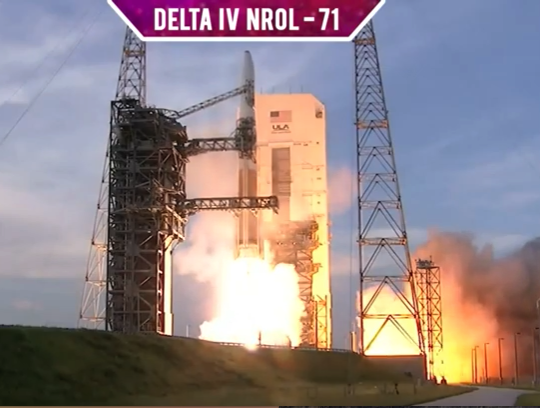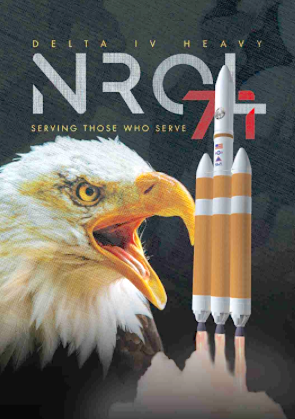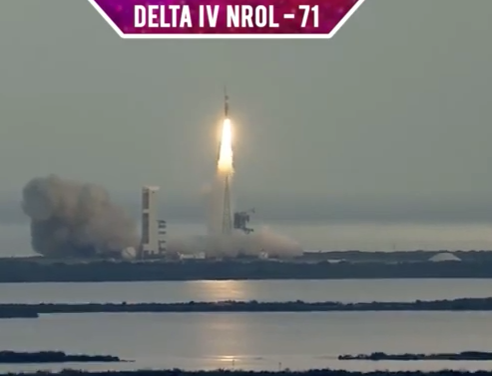

Everything went well as the ULA Delta IV Heavy launch carrying a critical payload for the National Reconnaissance Office (NRO) denoted NROL-71 lifted off from Space Launch Complex-6 on Jan. 19 at 11:10 a.m. PST. The mission is in support of our country’s national defense.
Statement from ULA
“Congratulations to our team and mission partners for successfully delivering this critical asset to support national security missions,” said Gary Wentz, ULA vice president of Government and Commercial Programs, “thank you to the entire team for their perseverance, ongoing dedication and focus on 100 percent mission success.”

The Delta IV Heavy is the nation’s proven heavy lift launch vehicle, delivering high-priority missions for the National Reconnaissance Office, U.S. Air Force and NASA. With its advanced upper stage, the Delta IV Heavy can take more than 14,000 pounds directly to geosynchronous orbit, as well as a wide variety of complex interplanetary trajectories.
The mission launched aboard a Delta IV Heavy, comprised of three common booster cores each powered by an Aerojet Rocketdyne RS-68A liquid hydrogen/liquid oxygen engine producing a combined total of more than 2.1 million pounds of thrust. The second stage was powered by an AR RL10B-2 liquid hydrogen/liquid oxygen engine.

NROL-71 is ULA’s first launch in 2019 and 132nd successful launch since the company was formed in December 2006.
ULA's next launch is the WGS-10 mission for the U.S. Air Force on a Delta IV rocket. The launch is scheduled for March 13, 2019 from Space Launch Complex-37 at Cape Canaveral Air Force Station, Florida.
With more than a century of combined heritage, ULA is the world’s most experienced and reliable launch service provider. ULA has successfully delivered more than 130 satellites to orbit that provide Earth observation capabilities, enable global communications, unlock the mysteries of our solar system, and support life-saving technology.
End Statement from ULA
The Delta IV Heavy is the nation’s proven heavy lifter, delivering high-priority missions for the National Reconnaissance Office, U.S. Air Force and NASA.
With its advanced upper stage, the Delta IV Heavy can take more than 14,000 pounds directly to geosynchronous orbit, as well as a wide variety of complex interplanetary trajectories.
“We are proud to launch this critical payload in support of our nation’s national security mission,” said Gary Wentz, ULA vice president of Government and Commercial Programs. “As the nation’s premiere launch provider, the teams have worked diligently to ensure continued mission success, delivering our customer’s payloads to the precise orbits requested.”

The Importance of this Mission, What the NRO is All About
The National Reconnaissance Office's (NRO) systems are critical to National Security, U.S. policy makers, and war fighters. These systems provide the foundation for global situational awareness, and address the nation's toughest intelligence challenges. Frequently, NRO systems are the only collectors able to access critical areas of interest, and data from overhead sensors provides unique information and perspectives not available from other sources.
The NRO's key customers and mission partners include: policy makers, the Armed Services, the Intelligence Community, Departments of State, Justice and Treasury, and civil agencies. All of them depend on the unique capabilities NRO systems provide:
- Monitoring the proliferation of weapons of mass destruction
- Tracking international terrorists, drug traffickers, and criminal organizations
- Developing highly accurate military targeting data and bomb damage assessments
- Supporting international peacekeeping and humanitarian relief operations
- Assessing the impact of natural disasters, such as earthquakes, tsunamis, floods, and fires.
Together with other Defense Department satellites, the NRO systems play a crucial role in providing global communications, precision navigation, early warning of missile launches and potential military aggression, signals intelligence, and near real-time imagery to U.S. forces to support the war on terrorism and other continuing operations.
NRO satellites also support civil customers in response to disaster relief and environmental research. Scientists created a global environment database using NRO imagery to help predict climate change, assess crop production, map habitats of endangered species, track oil spills, and study wetlands. NRO data also forms the basis for products that help depict and assess the devastation in areas affected by natural disasters.
The NRO's innovation also inspired technology in everyday life with contributions to medical imaging, global communications, high-definition television, cellular phones, the global positioning system (GPS), and much more.
With its vigilance from above, the NRO gives America's policymakers, intelligence analysts, warfighters and homeland security specialists the critical information they need to keep America safe, secure, and free.

